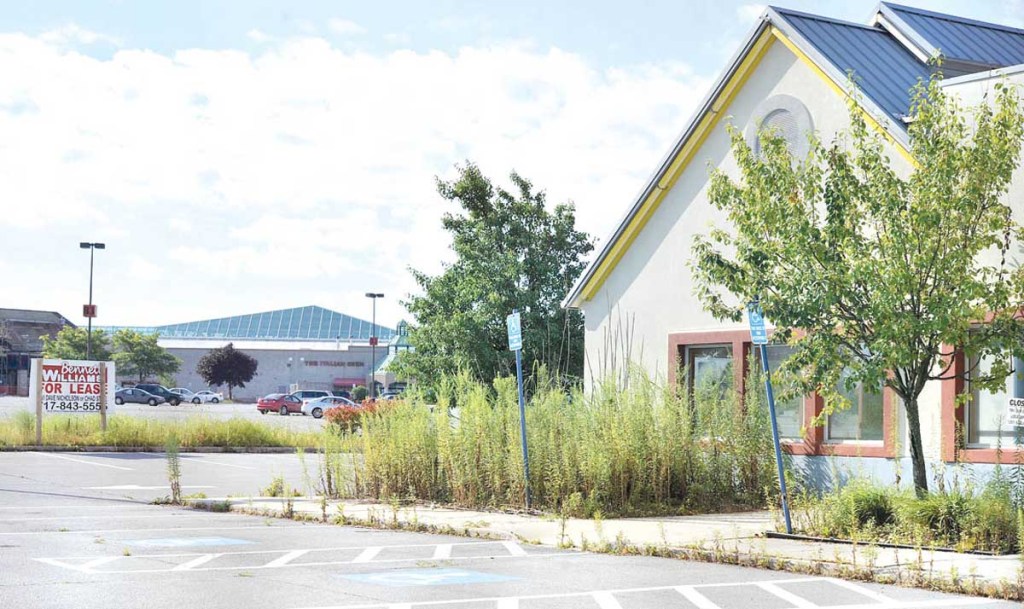Mid-level malls losing their luster
Published 1:45 pm Thursday, August 6, 2015

- High weeds grow around the vacant Long John Silver's location with The Johnstown Galleria in the background. August 5, 2015.
Sipping a soda, Pennsylvania mall walker Marilyn Locher said she’s sad to see more locked-up stores and fewer than half of the food court vendor slots open.
“I’ve been walking here in the mornings on and off for eight years. I don’t know how long it’s going to be here to walk,” she said, shaking her head.
A stroll through the second level of The Johnstown Galleria mall in Pennsylvania shows 11 empty storefronts, including five on an upstairs wing that leads to Sears, one of the mall’s four anchor department stores. Several others are empty near what used to be a Hollister shop, but now is a white rectangle that juts out from a wall and starts a row of four empty storefronts. Downstairs in the nearly 900,000-square-foot mall, five storefronts are open.
It’s a far cry from what Locher, and shoppers around the country, remember.
“I remember when it was first built, how excited everyone was,” she said. “I just think it’s worn out.”
The Johnstown Galleria is far from the only mall experiencing a decline.
Gruen malls — the well-known sprawling, boxy, indoor shopping centers — were first conceived by architect Victor Gruen in the 1950s to draw car-loving Americans to a common shopping space.
Indoor malls had their heyday from the 1960s through the 1990s, but now face competition from online retailers, outdoor drive-up-and-walk-in lifestyle centers and mixed-use shopping areas.
Green Street Advisors, a real estate analysis firm, predicted in 2014 that more than 15 percent of U.S. malls would would either fail or be converted into non-retail space within the next 10 years. Internet communities have developed a fascination with so-called “dead malls,” with websites dedicated to stories from the shells of retail splendor.
Still, not all malls are struggling. Retail consultant Howard Davidowitz believes malls with high-end retailers like Nieman Marcus and Saks Fifth Avenue will remain strong, telling Business Insider that mid-level stores in mid-level malls “don’t makes sense” with current shopping trends and income disparity.
Plans are proceeding in Miami for the construction of a whopping 200-acre mega mall, complete with sea lions, a ski slope and submarine rides. But most of America’s malls are not high-end, mega-destinations.
Mall spaces can be a tough sell anymore, according to Bob Varner, vice president of real estate and brokerage at Pennswood Commercial Realty in Pennsylvania, but the regional demographics – and lack of other convenient options – can help malls like The Johnstown Galleria.
“When you have a regional mall in the market and the next closest mall is not for another 40 miles, obviously there is a trade area demographic,” Varner said, nothing that at least for The Johnstown Galleria, a large population still shops in the mall, despite it being “semi-old and tired-looking.”
“The reality is, malls have lost their luster, especially in the middle market areas,” he said. “More people would prefer to drive up and park and go into a destination location right in front of them rather than walk the mall. That’s the culture today.”
No one from Zamias Services Inc., which owns and manages The Johnstown Galleria, returned calls for comment.





